The Ultimate Guide to Watering Your Cannabis Plants for Maximum Growth and Yield
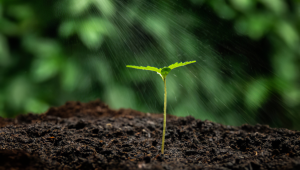
- 1. Introduction
- 2. Understanding the importance of watering
- 3. Monitoring soil moisture
- 4. Watering techniques
- 5. Signs of overwatering and underwatering
- 6. Nutrient solutions and ph levels
- 7. Automating your watering system
- 8. Environmental factors and watering frequency
- 9. Watering during different growth stages
- 10. Water quality and its impact on cannabis plants
- 11. Adapting watering practices for different growing mediums
- 12. Preventing common watering-related issues
- 13. Incorporating beneficial microorganisms into your watering routine
- 14. Watering schedules and adjustments
- 15. Monitoring and adjusting ph levels
- 16. Automating your watering system
- 17. Conclusion
1. Introduction
Cultivating cannabis plants requires a deep understanding of the various factors that contribute to their growth and development. Watering is an indispensable skill that must be learned by all growers. Our experts tested multiple methods to help you master everything you need to know about watering cannabis plants. From the pH levels and the ideal of water to the automatization systems and conservation.
2. Understanding the Importance of Watering
Water is the main source of life for cannabis plants. Through regular watering, your plants can go through important physiological processes. Some of the main ones are:
- Absorption of nutrients
- Photosynthesis
- Temperature regulation
- Growth and development
Each stage of the plant’s development depends on the water distribution. The higher the quality and the consistency, the better the yields you harvest.
3. Monitoring Soil Moisture
Soil monitoring is essential, especially if you are taking your first steps in your cannabis growing journey. Knowing the level of moisture in your plant’s medium helps you anticipate new issues the plant might get. Take a look the methods below we tried:
The Finger Test
Insert your finger up to 5 cm deep (around 2 inches) and feel the soil. If it’s dry, then water your plant until you see water draining from the base of the pot.
Soil Moisture Meters
A moisture meter is a tool that gives you clear and concise readings of the moisture levels. This instrument is for novice and experienced growers with many plants at different growing stages.
Weighing Pots
The principle behind this technique is quite simple. Weight the pot before and after watering. In the future, simply water your plants when the scale numbers match the first weighting.
4. Watering Techniques
Watering cannabis plants is not as simple as watering a decorative bush in the yard. You need to consider the plant’s needs. Implement a few watering methods to make it easier on you and on your plant.
Hand Watering
If you don’t want to use complicated tools or your garden is still small then water your cannabis hand by hand. Use a hose or a nozzle to reach the upper part of the pot and let the water penetrate into the soil.
| How to water cannabis plants by hand | |||
|---|---|---|---|
| Tools | Step 1 | Step 2 | Step 3 |
| Hose | Use a spray nozzle or a hose to abundantly water the base of your plant. | Move the hose/spray nozzle slowly to avoid disturbing the medium. | Stop watering once you notice water draining from the drain holes at the bottom of the pot. |
| Spray nozzle | |||
How to Hand Water Your Cannabis Plants
The drip irrigation is a watering technique that allows you to have direct access to the root area of the plant. This watering process can be automated and is a good alternative for medium to big cultivations.
| How to set up a drip irrigation system | |||
|---|---|---|---|
| Tools you need | Step 1 | Step 2 | Step 3 |
| Mainline hose | Place the hose along the basis of your cannabis plants. | Place each drip emitter where each cannabis plant is located. | Attach the mainline hose to a source of water and adjust the water flow. |
| Drip emitters | |||
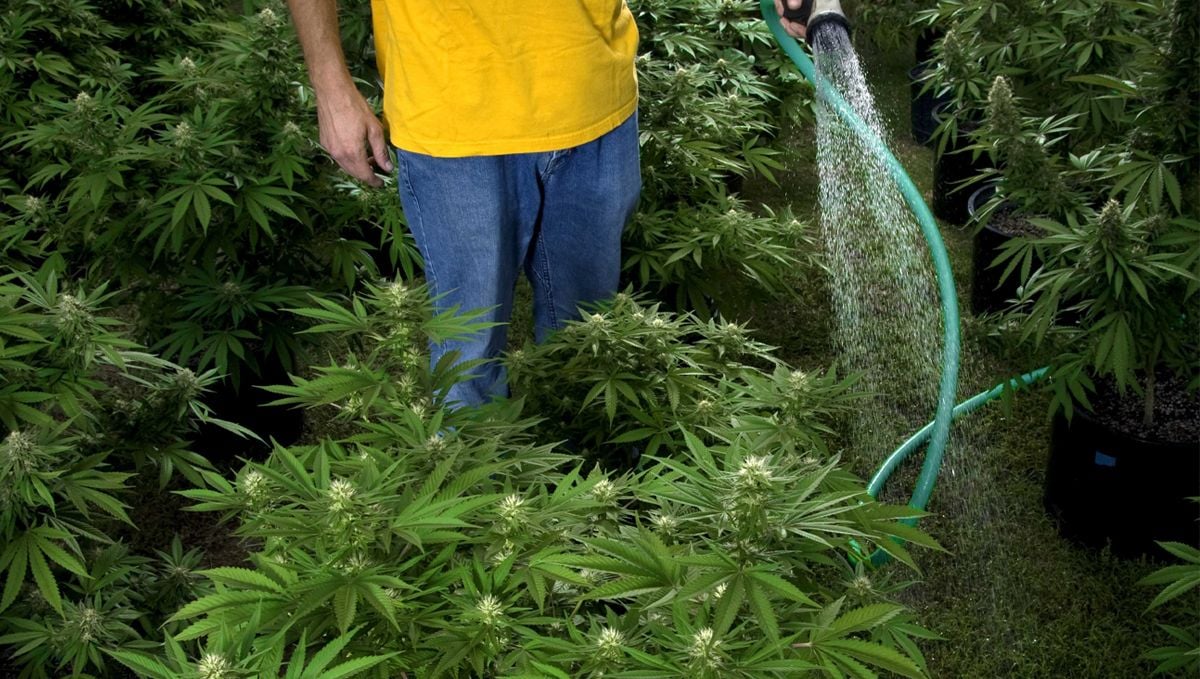
Flood and Drain Systems
Ebb and flow, or flood and drain systems are a watering system mostly used in hydroponic configurations. The way it works is by periodically drowning your plants with nutrient-dense water which is then drained into a reservoir. This technique is a great way to encourage good oxygenation of the roots.
Implementing a Flood and Drain System
Step 1
Use a growing tray for the cannabis plants containers or for your hydroponic medium.
Step 2
Connect a reservoir with nutrient-dense water with a pump to the growing tray.
Step 3
Control the moment your plants are fed by adding a timer. This will help you follow the flooding and draining cycles.
Wick Systems
The capillaries of the wick help to deliver water and nutrients to the plant by transferring water from the reservoir to the growing medium. The is a passive method that doesn’t require much effort after the initial time investment.
Establishing a Wick System
Step 1
Put a reservoir filled with feed water next to your plants.
Step 2
Add a long absorbent wick into the container and make sure it touches the grow medium.
Step 3
Allow the wick to be saturated with water so it keeps watering your plants in small doses all the time.
The Nutrient Film Technique (NFT)
The Nutrient Film Technique is often used in cultivation with limited space and for plants with a small root system. In cannabis cultivation, NFT allows constant contact with the nutrients while also promoting oxygenation and accelerated growth.
| How to configurate a NFT watering system | ||||
|---|---|---|---|---|
| Tools | Step 1 | Step 2 | Step 3 | Step 4 |
| Nutrient container or reservoir | Place the nutrient container on a flat surface in your grow room. | Install the plant container above the nutrient reservoir on a slight slope and a drain. | Insert the water pump and configure the plumbing so your plants can receive the feed water. | Start the pump and check if it functions well. |
| Water pump | ||||
|
Plant container |
||||
5. Signs of Overwatering and Underwatering
Over and underwatering are common mistakes that can be easily solved. Knowing when to add more water or when to stop will spare you from negatively impacting your plant’s health.
Signs of Overwatering
- Check for yellow leaves: Yellow droopy leaves are among the first signs of excess watering.
- Root rot: When watered in excess, there are high chances of new bacteria and fungi development at the level of the roots.
- Risk of mold and mildew: These issues develop in a damp environment and, if left untreated, can cause problems to your cannabis plant.
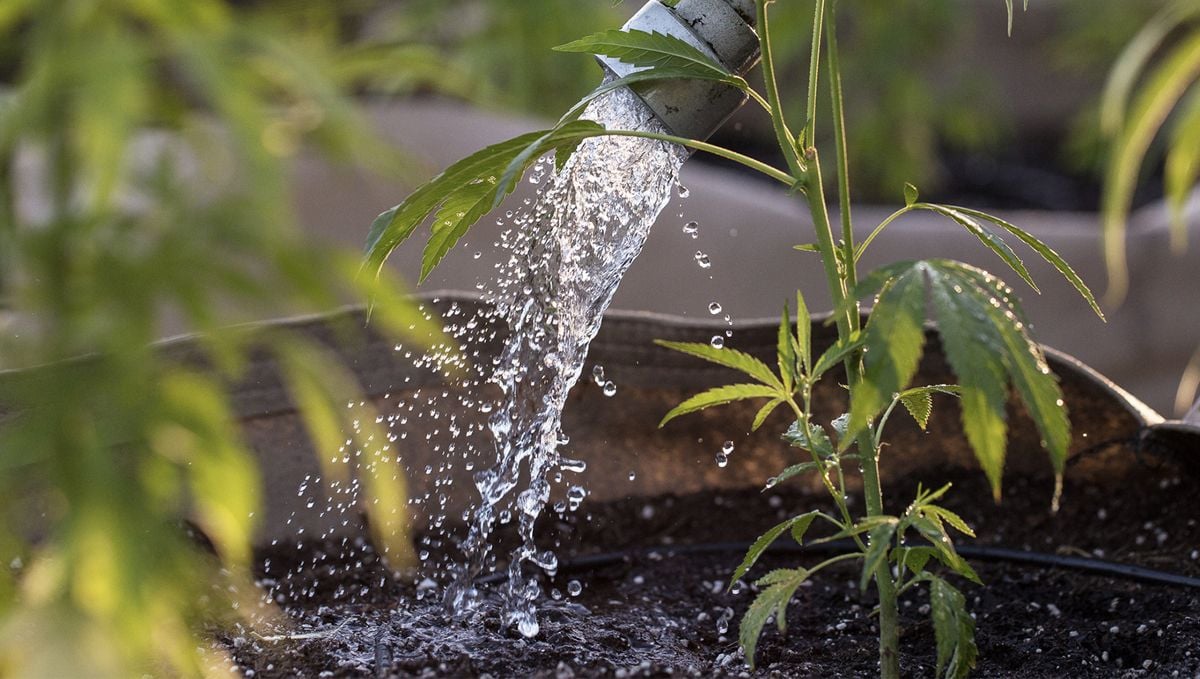
Signs of Underwatering
- Check the leaves: One of the first signs of underwatering can be seen at the leaves. They start wilting and curling up the edges.
- Dry soil: The soil in your pot is dry, crumbly and moves easily.
- The plant is not growing: Your plant’s growth can be slowed down or stunted completely if it doesn’t receive enough water.
6. Nutrient Solutions and pH Levels
The correct pH levels are one of the factors that assures the right nutrient delivery for your plant. You have to monitor the pH to make sure your plant constantly receives the right amount of nutrients.
The ideal pH level that helps nutrient absorption is slightly acidic. The range is between 6.0 to 6.8 for plants in soils medium and 5.5 to 6.5 for hydroponic systems. Adjust the pH with solutions and maintain it to optimal levels by testing it regularly.
Nutrient Solutions
Nutrient solution is water with nutrient intake necessary for a cannabis plant to thrive. Macronutrients (nitrogen, phosphorus and potassium) and micronutrients (calcium, magnesium and sulphur) supply the nutrients your plant needs to grow.
pH Levels
The pH level of the water you use to irrigate your cannabis plants plays a critical role in nutrient availability. Most cannabis plants prefer a slightly acidic pH, typically between 6.0 and 6.8 for soil and 5.5 and 6.5 for hydroponic systems. To maintain optimal pH levels:
- Test the pH of your water and nutrient solution regularly.
- Use pH up or pH down solutions to adjust the pH as needed.
7. Automating Your Watering System
There are a few tools you can use to automate your watering process. Doing this, you make sure that your plant is fed at the right intervals and minimize the risk of underwatering or overwatering.
Here’s what you need:
- Timers - timers are a great way to control frequency and duration of watering, particularly useful when using irrigation drips and ebb and flow.
- Moisture sensors - an essential tool that will measure the moisture content of your pot and send a signal to your watering system to start.
- Smart controllers - a good investment when you can’t be with your plants at all times. These controllers use data to anticipate the needs of your plant and water it based on that.
8. Environmental Factors and Watering Frequency
The good evolution of a cannabis plant depends also on evironmental factors such as light, temperature and watering frequency. But what are the external factors that can impact your plant’s growth?f
Temperature
Temperature is an important factor to consider when watering your plant. Naturally, in warmer months you’d expect to up the quantity of water, and lower it in colder months when evaporation is slower.
Humidity
When humidity is lower, your plant might need more water to keep the best level of hydration.
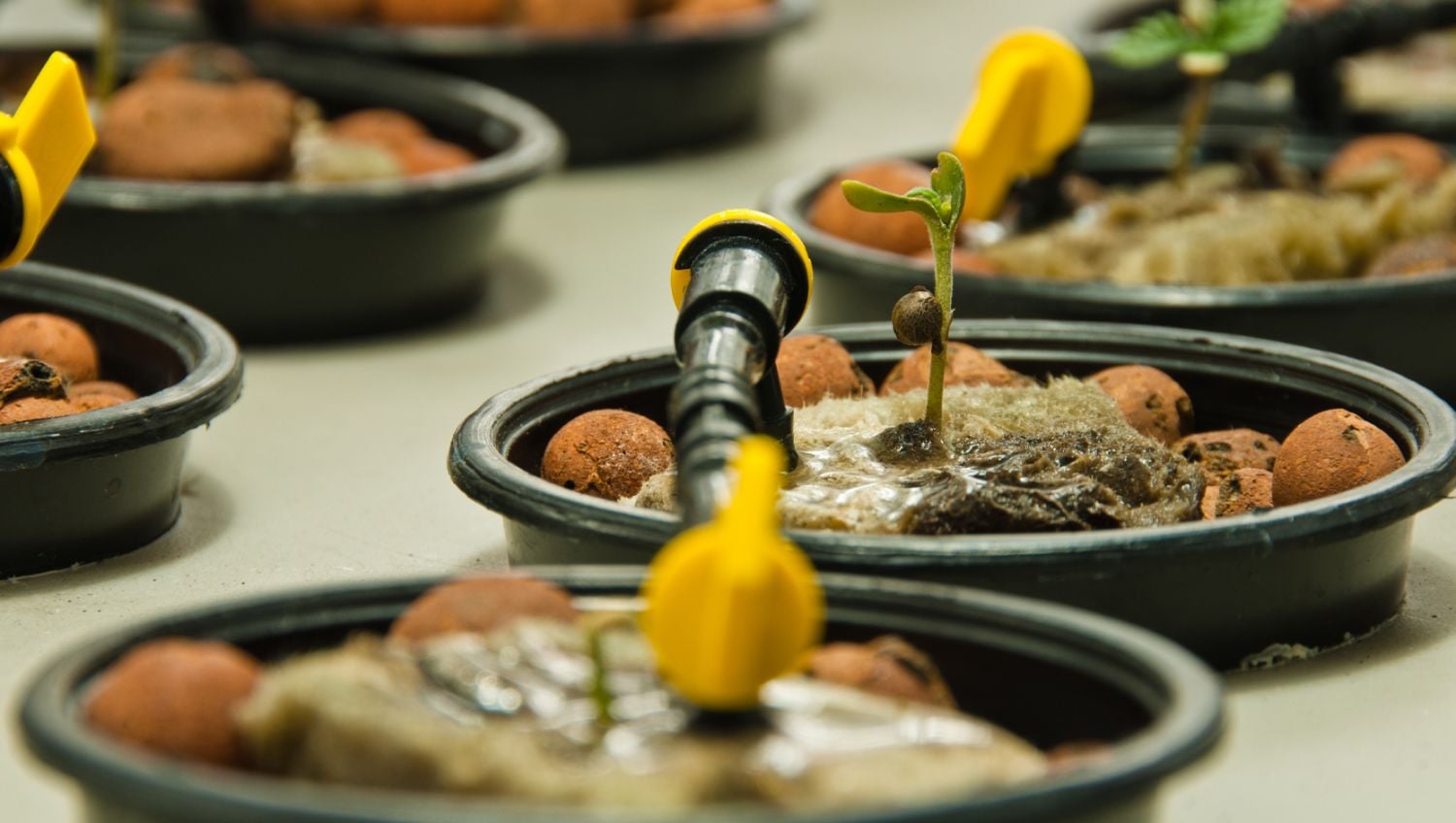
But, when the humidity levels are already high, it’s best to keep watering at lower paces due to the already wet environment.
Light Intensity
Light is an important factor that can change the watering requirements of your plants. The more intense the light exposure, the higher the rate of photosynthesis and transpiration.
9. Watering During Different Growth Stages
During the life cycle of your cannabis, the plant will have different water requirements. It’s only natural to water differently in the seedling stage in comparison to the vegetative or flowering stages.
Seedlings
During the seedling stages, the small plant is extremely fragile and sensitive to high quantities of water. While a moist environment is recommended and necessary, smaller quantities of water more frequently, are much better to minimize the risks of root rot.
Vegetative Stage
Most growers would recommend switching to feeding water during the vegetative stage. Now, the plant needs more nutrients and more water to properly develop its leaves.
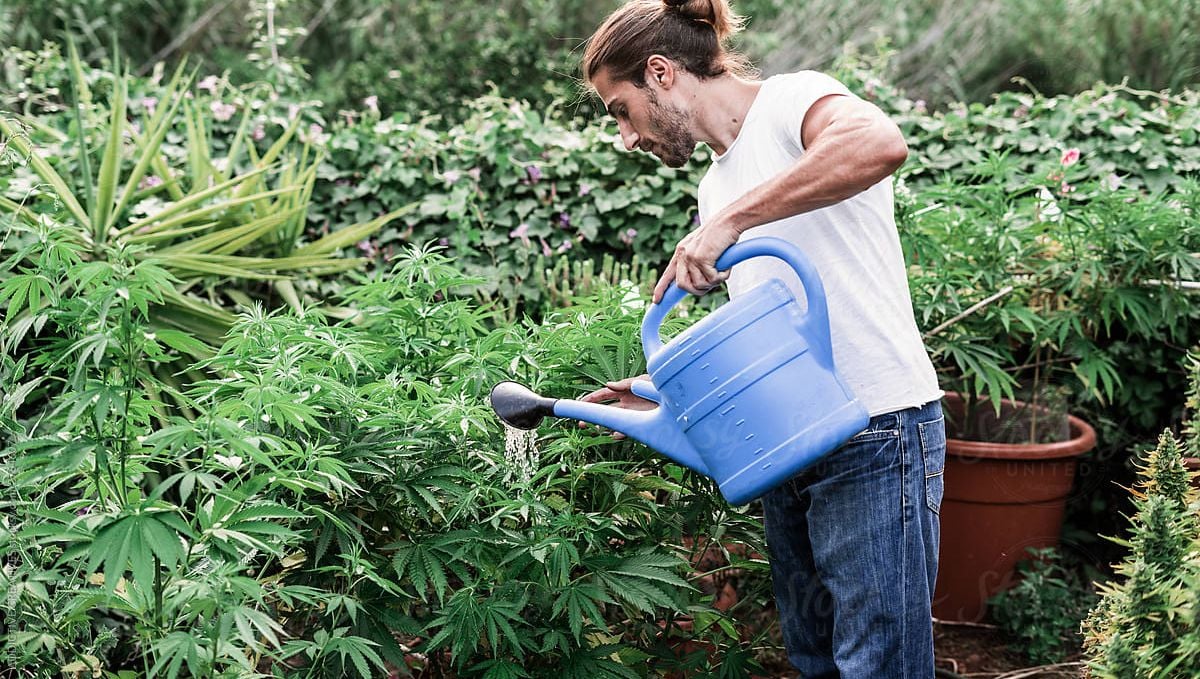
At this point of the growth, many beginners make the mistake of overwatering. Water the plants moderately to avoid root rot and nutrient blocking.
Flowering Stage
The more the plant develops and enters the flowering stage, the more it should be fed. Particularly during the time of development of the buds. When in the final stages, pay attention to avoid flooding the plant right before harvest time.
10. Water Quality and Its Impact on Cannabis Plants
Water is the main vessel that transports all the important nutrients to your cannabis plant. That’s why it’s important to make sure the water you use for your cannabis plant is of the highest quality. But what type of water is the best for your plant? Let’s find out!
Tap Water vs. Filtered Water
Tap water is usually safe for drinking in most places, but it might not be the best option for cannabis plants. Traces of chlorine and fluoride that are usually found in tap water can harm your plant’s development. Using filtered water could be a better choice when watering.
When you use filtered water, the nutrients are absorbed more efficiently. If you prefer tap water, then consider leaving it to sit for 24 to 48 hours before using it.
Dechlorination
Unless you have a filter installed, tap water can contain chemicals that disturb the microorganisms of your medium. Let’s see how you can remove these chemicals by using dechlorination:
| How to setup a Dechlorination system | |||
|---|---|---|---|
| Tools | Step 1 | Step 2 | Step 3 |
| Dechorination system | Buy a charbon filter or a charbon block and follow the label’s instructions. | Hook up the system to the tap water. | Start it right away or use it to make reserves of water. |
| Charbon block | |||
|
Charbon filter |
|||
Use other types of products designed for dechlorination such as sodium thiosulfate and ascorbic acid. We always recommend you follow the manufacturer’s instructions for dosage and application.
Hard Water vs. Soft Water
Soft water doesn’t contain the same amount of minerals as hard water. The excess of calcium and magnesium in the hard water can throw off the nutrient balance in your nutrient solution.
Reverse Osmosis (RO) Water
Reverse osmosis water is the purest form of water. The purification process removes all contaminants from it. With a blank canvas to add all the best nutrients for your cannabis plant you need to make sure the nutrient measurements are within your margins. The purification process also removes the good minerals.
Since this type of water is so beneficial, how do you implement an RO system in your grow room:
| How to set up a RO system | |||
|---|---|---|---|
| Tools | Step 1 | Step 2 | Step 3 |
| RO system | Purchase a RO system from a trusted seller. Install it based on the instructions. | Connect the Reverse Osmosis setup to your water source. | Collect the water or use it as needed. |
11. Adapting Watering Practices for Different Growing Mediums
Depending on the growing medium of your plants, you need to adapt the way you water them accordingly. That’s to say, you won’t have the same process for soil-growing plants and hydroponic setups. Let’s see how:
Soil
Soil is quite easy to water thanks to the buffer you have between roots and water. Hydrate your plant until you see water coming from the draining holes, that’s when you need to stop. Bonus, chances of over or underwatering are lowered.
Coco Coir
Coco-coir is a great option of medium thanks to its ability to retain water and to keep roots in contact with oxygen. This type of medium requires watering more often.
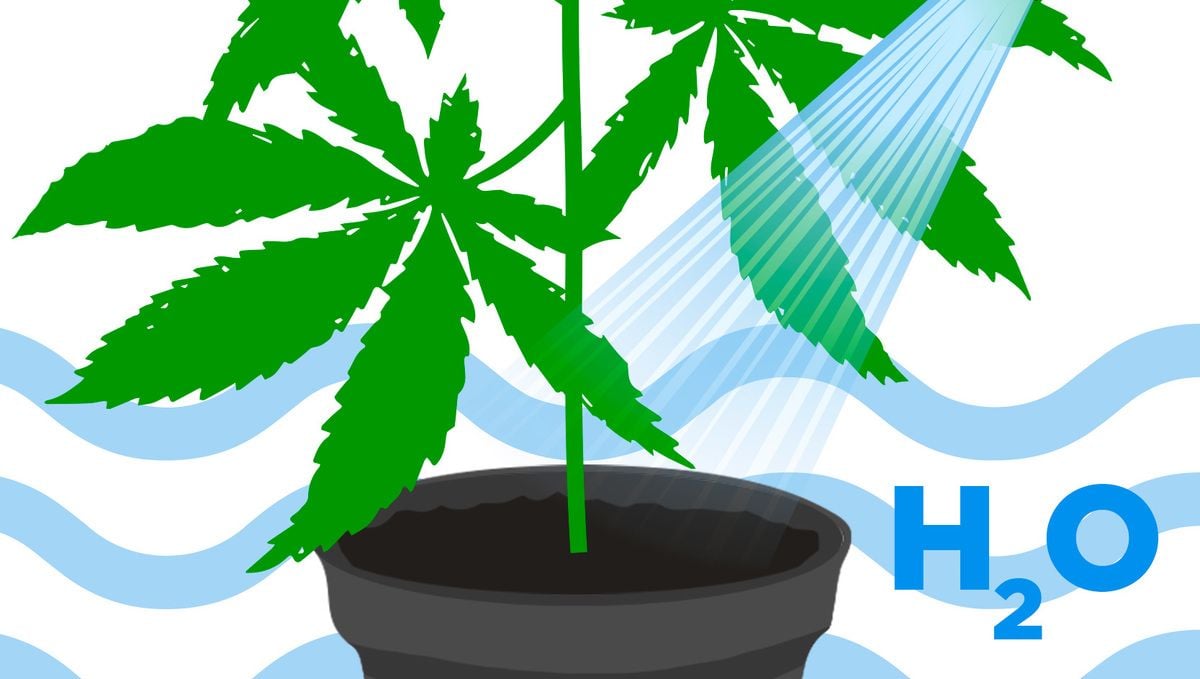
Make sure to properly monitor the moisture levels due to the higher water consumption.
Hydroponics
In hydroponic setups, measure the pH levels and electrical conductivity to make sure the plant receives all the nutrients necessary. A pro in watering hydroponic aspects is that you’ll have full control over the delivery of water.
12. Preventing Common Watering-Related Issues
We can now say that watering cannabis plants is not so easy. But here are some tricks to help you avoid the most common mistakes:
- Keep up with your schedule: Set a watering schedule and stick to it. This way, your medium is moist and doesn’t risk underwatering issues.
- Don’t pour too much water at once: Always check moisture levels in your medium. Overwatering your plant can lead to problems that will impact your harvest greatly.
- Foresee the future: If you notice your plants leaves are a bit down and curly, then it might be an issue of underwatering. Take care of it fast and don’t overwater to compensate.
- Clean the drainage hole: Whether you're using plastic pots or fabric pots, make sure your drainage functions properly to avoid waterlogging.
13. Incorporating Beneficial Microorganisms into Your Watering Routine
The symbiotic relationship between mycorrhizal fungi and other bacteria with the roots of the cannabis plant is extremely positive as it promotes the growth of the roots and a better absorption of the nutrients.
Adding these organisms to your feeding water is not complicated. Buy these supplements with beneficial microbes from your trusted gardening store and follow the label instructions. Use these organisms during your watering routine.
14. Watering Schedules and Adjustments
No matter how many plants you have in your cultivar, a well-set schedule ensures your plant will give you the best yields in no time. Each type of medium has different requirements and it’s necessary to be flexible and adaptable based on each plant’s needs.
Seasonal Adjustments
A tale as old as time, when it’s warm, you have to water more, when it’s cold, you need to water less. As seasons change, so does the environment around the cannabis plant and the evaporation rate of the water.
During colder months, the humidity levels, along with the light and temperatures are much lower. Because of this, your plant will need less moisture.
Growth Stage Adjustments
The plant’s needs change almost on a weekly basis so you need to follow its development to adapt your schedule accordingly. The changes are visible from the first moments of germinating your plant.
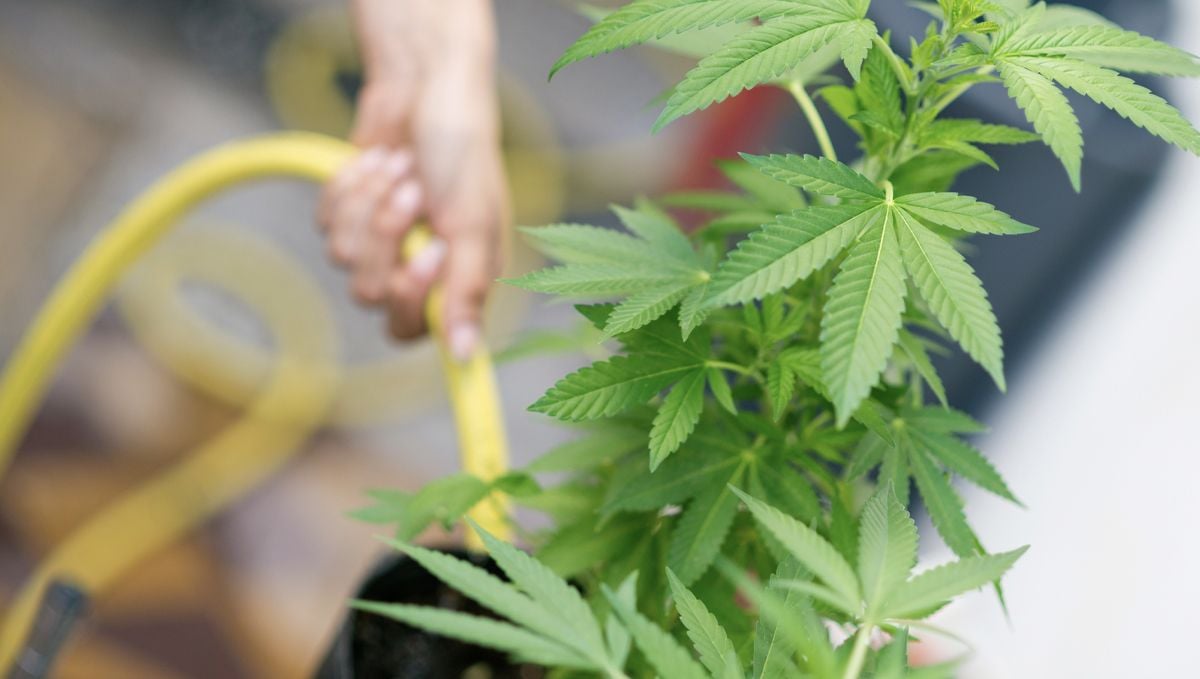
Once the cannabis plant reaches the vegetative stage, up the water content and frequency to aid the leaves to grow. Finally, in the flowering stage increase your feeding water even more to help with the fattening of the buds. Remember to always check the moisture at the level of your roots to avoid any rot or overwatering.
Plant Variety Adjustments
Each type of cannabis variety has different predispositions. Some strains prefer a drier, warmer environment, whereas others prefer more water and cooler temperatures. Be sure to consult your strain’s specific requirements and check their cultivation guide.
15. Monitoring and Adjusting pH Levels
Water conservation is a good habit to adopt not only because it’s more sustainable, but it can also reduce costs, lower waste production and optimize resources. Here are some useful methods:
Mulching
Mulching implies layering multiple types of organic and inorganic materials into your growth medium. This technique has great advantages on moisture retention, soil temperature and, bonus, suppresses the growth of bad weeds. Here’s how you can add mulch to your weed cultivation setup:
- Select the mulching material that better fits your plants’ growing system among wood chips, leaves, straw and coco-coir.
- Spread the material evenly, without overcrowding the base of your plant.
- Maintain the mulch layer throughout your plant’s lifecycle.
Drip Irrigation Efficiency
Drip irrigation systems are a great choice for watering your plants directly at the root. This method minimizes the water evaporation and can be further improved by doing so:
- Implement emitters that can compensate for the water pressure in an uneven growing space.
- Check the flow of the water by using a flow meter to make sure your plants have an even distribution of water.
- Do some maintenance work on the emitters to avoid clogging and lower performance.
16. Automating Your Watering System
Automation can greatly simplify the watering process and ensure consistent, precise water delivery to your cannabis plants. Several automated watering systems are available, including drip irrigation, ebb and flow systems, and nutrient film technique (NFT) setups.
Drip Irrigation
Drip irrigation systems deliver water and nutrients directly to your cannabis plants' root zones through a series of emitters connected to a central supply line. This method allows for precise control over water and nutrient delivery, as well as reduced water waste due to evaporation. To set up a drip irrigation system:
- Install a water reservoir to hold your nutrient solution.
- Connect a supply line from the reservoir to your growing area.
- Attach drip emitters to the supply line and position them near your cannabis plants' root zones.
- Use a timer to automate the delivery of water and nutrients to your plants at regular intervals.
Rainwater Collection
Rainwater is a great option if you want to become self-sufficient and also minimize costs. Moreover, rainwater is much softer in comparison to tap water and doesn’t need as much filtering. Here’s how you can collect rainwater efficiently:
- Use your roof or other inclined surfaces where water can drip down. Install gutters and downspouts and direct them to a collection point.
- Use a carrel or cistern to collect big quantities of water.
- Filter the water to remove impurities.
- Install a pump to help you distribute the water to your plants.
Reusing Nutrient Solution
A technique more adapted for hydroponic systems, it allows reusing the nutrient solution by using a circular system where you can minimize the use of water and still keep the same amount of nutrients. How to implement this type of system:
- Collect the feed water from your drainage container.
- Filter the solution by using a sediment filer or a UV sterilizier to remove contaminants.
- Test and adjust the pH and electrical conductivity of the solution.
- Add the solution back into the reservoir of the hydroponic system.
Check regularly your plants for any signs of imbalance because reusing the nutrient solution can lead to salts buildup. Occasionally flush the watering system and check the irrigation system for blockages.

By following these steps, not only will you keep your plants healthy and well fed, but you’ll also reduce cost and lower the environmental footprint.
- Install a water reservoir to hold your nutrient solution.
- Connect a series of sloping channels to the reservoir using a pump and appropriate plumbing.
- Place your cannabis plants in the channels, ensuring that their roots are positioned to make contact with the nutrient solution
- Use a pump to continuously circulate the nutrient solution through the channels, creating a thin film that bathes your plants' roots.
16. Conclusion
Watering your cannabis plants can seem daunting, however, if you follow the steps in this guide, you’re sure to have the basis covered. Keep in mind to always be consistent, and, if you struggle with that, implement a system that will do it for you.
Now, you should be able to know when and how to water your cannabis plants, how to avoid rookie mistakes such as under and overwatering and what’s the best type of water. Remember to always measure the nutrients and pH levels in your medium and check the moisture levels. If you do all that, then you’ll be rewarded with high and healthy yields.








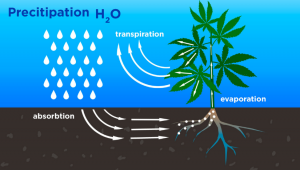

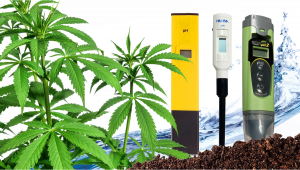
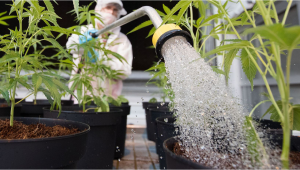
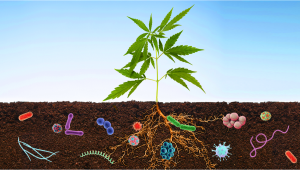
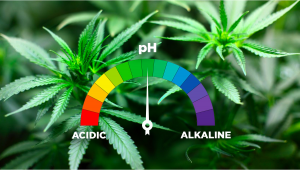
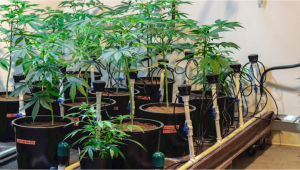


Comments